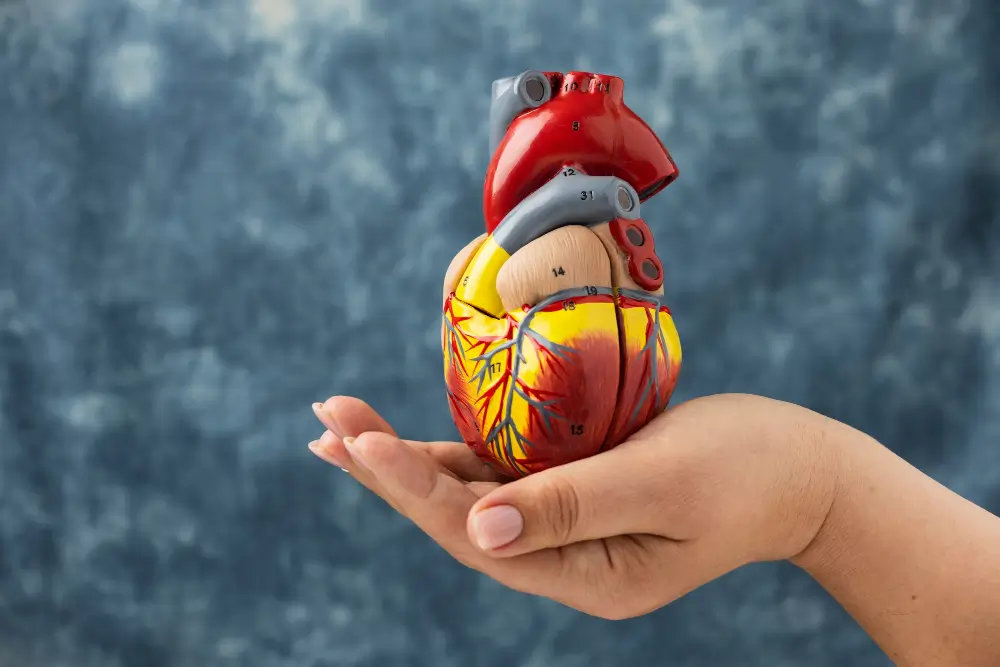
Coronary artery bypass grafting (CABG) is a surgical procedure performed to improve blood flow to the heart. It is one of the most common and effective treatments for coronary artery disease (CAD), a condition where the arteries that supply blood to the heart muscle become narrowed or blocked. This comprehensive guide will explore the reasons for CABG, the surgical process, and what to expect during recovery.
Understanding Coronary Artery Disease (CAD)
Coronary artery disease is a condition characterized by the buildup of plaque (a combination of fat, cholesterol, and other substances) inside the coronary arteries. This buildup narrows the arteries, reducing blood flow to the heart muscle and leading to symptoms such as chest pain (angina), shortness of breath, and, in severe cases, heart attack.
What is Coronary Artery Bypass Grafting (CABG)?
CABG involves taking a healthy blood vessel from another part of the body (often the leg, arm, or chest) and using it to create a new pathway, or “bypass,” around the blocked or narrowed coronary artery. This restores adequate blood flow to the heart muscle, alleviating symptoms and reducing the risk of heart attack.
Reasons for CABG
CABG is recommended for individuals with severe CAD who have:
- Multiple blocked coronary arteries.
- Severe narrowing of the left main coronary artery, which supplies most of the blood to the heart.
- Ineffective response to other treatments, such as medications or angioplasty.
- Diabetes combined with multiple artery blockages.
The CABG Procedure
Pre-Surgery Preparation
- Medical Evaluation: Before the surgery, patients undergo a thorough medical evaluation, including blood tests, imaging studies (such as coronary angiography), and assessments of overall health.
- Fasting: Patients are instructed to fast for several hours before the surgery.
- Medications: Doctors may adjust or prescribe medications to prepare for surgery and manage any underlying conditions.
The Day of Surgery
- Hospital Admission: Patients are admitted to the hospital, and a nurse will prep them for surgery, including placing an IV line for fluids and medications.
- Anesthesia: The procedure is performed under general anesthesia, meaning the patient will be asleep and pain-free during the surgery.
During the Surgery
- Incision: A surgeon makes an incision in the chest to access the heart. This is typically done through a sternotomy, where the breastbone is divided.
- Bypass Grafting: The surgeon takes a healthy blood vessel from another part of the body and grafts it to the coronary artery, bypassing the blocked section.
- Heart-Lung Machine: In many cases, a heart-lung machine is used to circulate blood and oxygen through the body while the heart is temporarily stopped. Off-pump CABG, which does not use the heart-lung machine, is also an option in some cases.
- Completion: Once the grafts are in place and the heart is beating normally again, the surgeon will close the incisions in the chest.
Post-Surgery Recovery
- Immediate Recovery: Patients are taken to the intensive care unit (ICU) for close monitoring as they wake up from anesthesia. They will be connected to various tubes and monitors.
- Pain Management: Pain medications are administered to manage post-surgical discomfort.
- Hospital Stay: The hospital stay typically lasts 5-7 days, during which patients are closely monitored for complications and begin initial recovery steps, such as sitting up and walking.
Recovery at Home
1. Rest and Activity
- Gradual Increase: Patients should gradually increase their activity level, starting with short walks and slowly progressing to more extended activities as they regain strength.
- Avoid Strain: Avoid heavy lifting and strenuous activities for at least 6-8 weeks to allow the sternum to heal properly.
2. Wound Care
- Incision Care: Keep the incision site clean and dry. Follow the surgeon’s instructions for wound care and watch for signs of infection (redness, swelling, discharge).
3. Diet and Lifestyle
- Heart-Healthy Diet: Adopting a heart-healthy diet is crucial. Focus on consuming plenty of fruits, vegetables, whole grains, lean proteins, and healthy fats while limiting saturated fats, salt, and sugar.
- Lifestyle Changes: Quitting smoking, managing stress, and maintaining a healthy weight are vital steps to ensure long-term heart health.
4. Follow-Up Care
- Regular Check-Ups: Attend all follow-up appointments with the healthcare provider to monitor recovery progress and address any concerns.
- Cardiac Rehabilitation: Enroll in a cardiac rehabilitation program, which provides supervised exercise, education on heart-healthy living, and support to help patients recover and improve their cardiovascular health.
Potential Complications
While CABG is generally safe, potential complications can arise, including:
- Infection: Increased redness, swelling, or discharge from the incision site.
- Bleeding: Excessive bleeding at the surgical site or internally.
- Blood Clots: Increased risk of blood clots, which can lead to complications such as stroke.
- Arrhythmias: Irregular heartbeats may occur after surgery.
It is essential to contact a healthcare provider immediately if any of these symptoms develop.
Long-Term Outlook
Most patients experience significant relief from symptoms and a reduced risk of heart attack after CABG. With proper lifestyle changes, medications, and ongoing medical care, many individuals return to a normal, active life. Regular follow-ups with a cardiologist and adherence to a heart-healthy lifestyle are crucial for maintaining the benefits of the surgery.
Conclusion
Coronary artery bypass grafting (CABG) is a life-saving procedure that can restore blood flow to the heart, alleviate symptoms of coronary artery disease, and reduce the risk of heart attack. By understanding the reasons for CABG, the surgical process, and the recovery steps, patients can approach the procedure with confidence and take proactive steps toward a healthier future. Always consult with healthcare providers to make informed decisions about your heart health and follow their guidance for the best possible outcome.
